How ‘Handsome Harry’ Crocker conquered Hollywood and created the family’s second museum
By Kevin Taylor
On New Year’s Day in 1928, Edwin Schallert, film critic for The Los Angeles Times, gave a champagne toast to Charlie Chaplin’s new film The Circus in his column hailing it simply as “one of the funniest motion pictures of all time.” The raucous comedy premiered a few days later in New York City at the Strand Theater, and then at Grauman’s Chinese Theater in Hollywood on January 27th. The Los Angeles Express beamed, “…Undeniably the funniest of Charlie’s output in years. Just a stream of looney events in the realm of the sawdust gypsies and ingenious beyond Charlie’s usual efforts. Gags ingenious and hilariously effective. Nowhere has there been a funnier thing.”
The film costarred Al Ernest Garcia as the circus proprietor and ringmaster, Merna Kennedy as the ringmaster’s step-daughter, a circus rider, and Harry Crocker as Rex, a tight rope walker. Harry was the grand-nephew of Sacramento’s railroad tycoons Charles and Edward Crocker and cousin to its famous socialite Aimée Crocker.
The production of the film was the most difficult experience in Chaplin’s career. Numerous problems and delays occurred: scratched film negatives, a major studio fire, the death of Chaplin’s beloved mother, and extended litigation with both the IRS and his bitter second wife Lita Grey at divorce court.
When Harry Met Charlie
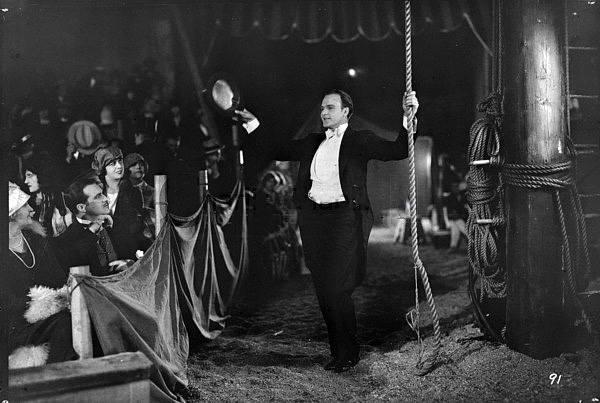
Harry Crocker first met Charlie Chaplin at parties. They worked well off of each other playing charades. Recognizing a fellow artist and a man with ideas as well as an able actor, Chaplin went to Carmel with young Harry and together they wrote the beginning of The Circus.
Harry Crocker was one of five writers in the writer’s room at The Charlie Chaplin Studios on LaBrea matching wits, battling, haranguing and doing their damnedest to dazzle The Tramp. “Charlie was an implicit believer in brain-cudgelling,” wrote Crocker in his unpublished biography Charlie Chaplin: Man and Mime, “…in his fine frenzy of creation, Charlie forgot meals, forgot time.” So impressed was Chaplin with young Harry that he hired him as an assistant director on The Circus and later on his masterpiece City Lights. Crocker’s man-of-the-world poise, tact and lovable personality served nicely as a counterbalance to the comedian’s sometimes demanding nature.
The Circus was nominated for three Oscars at the very first Academy Awards ceremony for directing (comedy picture), acting and best writing (original story). The Academy later took Chaplin out of the running by giving him a Special Award “for writing, acting, directing and producing The Circus.” It is the seventh-highest grossing silent film in cinema history taking in more than $3.8 million. The film continues to receive high praise by movie buffs and critics alike.
It was a banner year for the entertainment industry. An absolute revolution was ushered in to theaters with the release of Lights of New York, the world’s first all-talking full-length feature film. It followed two blockbuster part-talking features starring Al Jolson, The Jazz Singer and The Singing Fool, which was the highest grossing film of all time until Snow White and the Seven Dwarfs was released ten years later. The rabid enthusiasm with which audiences greeted the “talkies” was so great that by the end of 1929, Hollywood was producing sound films exclusively.
In September of ’28, boy genius Philo Farnsworth demonstrated the first successful television transmission at a news conference. A mystified Earle Ennis of The San Francisco Chronicle wrote, “Out of the West like the realization of a prophet’s dream has come the greatest wizardry yet of the civilized day — television.” A year later Farnsworth showed blurry moving pictures of silent-film actress Mary Pickford in The Taming of the Shrew on his new invention.
That same month, a third groundbreaking endeavor to make a mark on show business was birthed — the country’s first motion picture museum, which opened on Sunset Blvd. directly across from the Warner Brothers lot. It was the brainchild of Charlie Chaplin’s right-hand man, factotum and lieutenant Mr. Harry Crocker. Like his Great Uncle Edwin of Sacramento, Harry would build a tremendous museum in California.
The Backstory
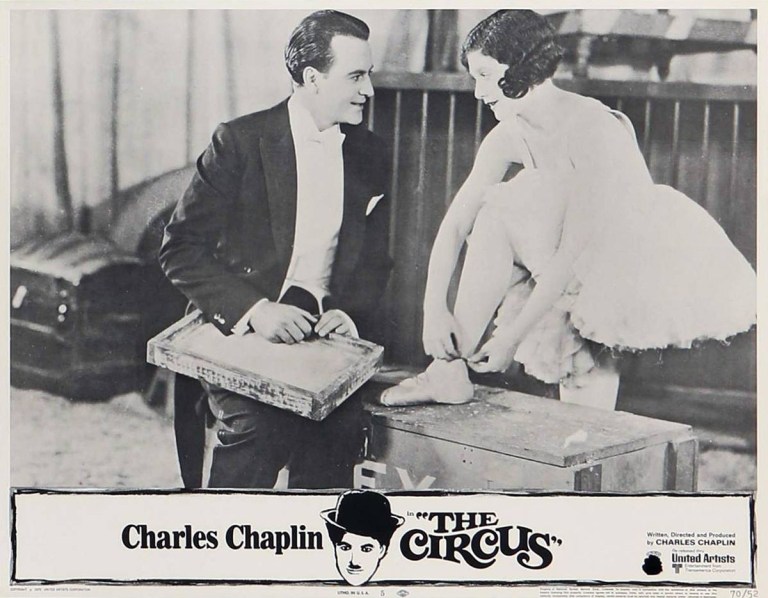
Harry’s rapid rise to Hollywood’s upper echelon of power brokers was truly remarkable. Born in San Francisco on July 2, 1893, the son of Henry James Crocker, a millionaire banker and oil man, Harry went back East for his education first at Taft School in Watertown, Connecticut. His premiere theatrical performance at that institution was in Sir A.W. Pinero’s The Amazons. John Garfield, grandson of President Garfield, and C.P. Taft, son of President Taft, added luster to the cast.
As a junior at Yale he won the Gordon Brown Prize as best all around athlete, student and leader in the class.(Past recipients of the cash award include President George H.W. Bush).
Under the tutelage of his acting coach Edgar Montilion “Monty” Woolley, he starred in two Yale Dramatic Association productions. Another highlight as an entertainer during his college years took place at the Waldorf Astoria when he performed a ventriloquist stunt with an actor on his knee at a dinner for 1200 Yale graduates and ex-President William H. Taft.
At Yale, the alma mater for cousins William H., William W. and Templeton, Harry the socialite and aristocrat became a pledge at one of the oldest fraternities in America, Delta Kappa Epsilon, and one of the richest Ivy League secret societies — Scroll & Key. Former members of this club include supreme court justices, congressman and senators, governors and big city mayors, ambassadors, Nobel Prize winners, CIA Directors and more than one Newsweek editor, as well as cartoonist Gary Trudeau, songwriter Cole Porter (one of Harry’s buddies), Cornelius Vanderbilt and Bill Clinton. Classmates were just wild about Harry. When he graduated with honors in 1916, Henry J. Crocker, Jr. was voted the Most Popular in his class.
After serving as an ensign in the U.S. Naval Reserve during the Great War, Harry took jobs at Uncle H.S. Crocker’s printing firm in San Francisco and then with bankers Pickard, Shaughnessy & Anderson and brokers Houseman & Company. While inheriting some his family’s business acumen, he also had an artistic bent and never recovered from the acting bug that he caught back in high school.
The millionaire Crocker moved to LA in 1924, starting his show biz career as a $7.50 a day extra. He quickly appeared in two monumental films by King Vidor — The Big Parade and La Boheme and in the film Sally starring Colleen Moore which was based on a successful Ziegfeld play.
Instead of fading into the background as his job required, Crocker stood out. He goofed with the crew, canoodled with the cast and made friends with the director. Through a fellow extra acquaintance, Gerald Grove, the pleasant younger son of a British title, he was introduced to Elinor Glyn, the famous writer of Three Weeks and monarch in Hollywood. Glyn assembled a group of pets, a bevy of boys, a stock company of mostly impoverished foreign titles who eked out a precarious living in motion pictures. Crocker rose above the rest because he was clever and witty and confident, he wasn’t eking, and he was a dazzling dancer. The Glyn introduction led to a series of “dinners a deux,” much attention dervishing on the dance floor and an evening at the Ambassador Hotel with the Barrymores at a bungalow suite with John entertaining Crocker and Glyn in his blue lounge robe.
Harry became Hollywood’s “it” guy.
By the end of that year, Crocker was writing, assistant directing and starring in a major Charlie Chaplin movie. When filming was shut down at The Circus set, Harry was hired to share the screen with stars like Shirley Mason (Sally in Our Alley), Patsy Ruth Miller (South Sea Love), Sally O’Neill (Becky) and the great a powerful Marion Davies who he starred with in the popular comic strip turned feature film Tillie the Toiler.
At night Handsome Harry, much in demand socially, donned his evening clothes and went out in the ultra-smart set. He became part of the inner circle of the Marion Davies’ clique. With her numerous estates and unlimited wealth, as William Randolph Hearst’s mistress, Marion could entertain on a bigger scale than anybody in town — and she did.
Marion and Harry became playmates. She would sign Harry’s autograph book: “To my best friend Harry from his best friend Marion Davies.” (The pages in his Book of Life, incidentally, includes signatures, poems, jokes and drawings by not only every big movie star from the 1920s to the 1950s but Albert Einstein, Aldous Huxley, Howard Hughes, Jean Cocteau, a doodle by Picasso, a full original color cartoon by Walt Disney and a tiny signature by Adolf Hitler).
The New Crocker Museum
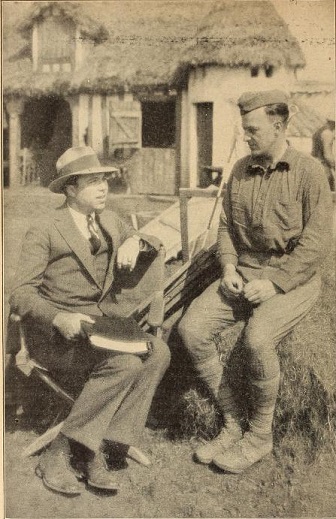
The unique associations with Charlie Chaplin and Marion Davies gave Harry Crocker invaluable contacts and insight into the motion picture industry. He learned the game perhaps quicker than any outsider ever.
The idea to build a museum came to him from watching tourists step with awe in the footprints of famous screen stars imprinted in concrete in the forecourt of Grauman’s Chinese Theater and from the enormous throngs of the curious gathered outside of movie houses on premiere nights.
The basic scheme for the museum was to accommodate tourists and movie fans, the vast majority of whom had no entree to the studios. These visitors, thwarted in their curiosity, would find some degree of satisfaction in viewing at close range the accessories of film production in Crocker’s museum. His business plan and lofty goal was to preserve and exhibit historic motion picture relics for posterity and amusement. He also wanted the public to experience what he felt when he came to town filled with Hollywood dreams just a few years earlier and then gained admittance to the magical world of cinema.
“I got a tremendous thrill,” he said, “the first time I went around the studios. I realized how these people felt. So I thought it would be a good thing to start a museum where the outside world could get a peep behind the scenes.”
Janet Gaynor’s caravan circus wagon from The Street Angelwas presented and also one of the impeccably constructed dinosaurs from The Lost World. One of the most valuable exhibits was the Paramount model of Old Ironsides, built as a working model for the full-sized ship in the film about Barbary pirates starring Wallace Beery. It was perfect in every detail, from gunwale to masts. Crocker carried a $55,000 insurance policy on the Ironsides model.
Douglas Fairbanks contributed the gigantic Argentinian carriage used in The Gauchoand the magic rope that was such an important part of The Thief of Bagdad. Harry acquired the chariot which carried Mary Magdalene pulled by zebras from The King of Kings by D.W. Griffith, and another chariot featured in Ben Hur. A streetcar from Merry Go Round stood silently in the corner.
Marion Davies gave Harry some costumes and photos of her doing inimitable impersonations of Mae Murray. Greta Garbo, Lillian Gish, Pola Negri and Gloria Swanson. (Marion was Lucille Ball’s chief comic inspiration). A detailed, miniature set of the snowslide scene in Chaplin’s “The Gold Rush,” where the cabin has been blown to the precarious edge of a snow-covered cliff was put on display. There were dozens of other such models used in the making of memorable pictures and hundreds of stills taken from films of those prehistoric days when Vitagraph, Biograph and Pathe were big names in the movies.
A complete studio set was erected with lights, wax dummies and cameras illustrating the functions of actors, director, camera man, etc. Scripts were available to read. Caricatures by industry darling artist Bert Levy were put on the wall next to portraits of screen sirens.
For months Crocker worked on the idea, interesting his friends and calling on the studio officials for cooperation. He was aided and abetted by indulgent producers who looked the other way while he looted their property rooms. The items in the museum cost him nothing. Some were gratuitous loans, and many were gifts. His friends rallied nobly. The nucleus of the collection was contributed by his own personal Hollywood friends.
Finally Harry rented a picturesque Spanish building, formerly an automobile display room, with 10,000 square feet of floor space, on Sunset Boulevard, across the street from Warner Brothers studios. The ballyhoo of cinemaland turned up to the premiere. Arc lights announced and illuminated the festive event. Charlie Chaplin acted as master of ceremonies opening the doors by turning a large gold key in a gigantic lock.
Costumes and props of world-famous stars in blockbuster films were on display. Valentino’s Son of the Sheik “Abdias”—or smocks in all their brocade and metal embroidery were exhumed. Several rapiers, guns inlaid with mother of pearl, armlets and sword hilts encrusted with rubies and semi-precious stones were loaned by the Rudolph Valentino estate. Harold Lloyd’s first horn-rim glasses were there. Buster Keaton’s flat hat, Al Jolson’s wig and white gloves which the blackface comedian wore in The Jazz Singer and Bill Hart’s chaps worn in 50 films joined the party. Betty Bronson’s woodland Peter Pan costume was on display. Lillian Gish entrusted Harry with her Scarlet Letter from the film of the same name.
A gallery of photographs showing the evolution of the bathing girls’ undress was on display (featuring bathing suits made famous by Mack Sennett), beginning with the antiquated furbelows of Gloria Swanson, Phyllis Haver, and Marie Prevost, and continuing down the line to the “scant trifles” of dark-haired silent actress Madeline Hurlock.
It was Charlie Chaplin’s famous derby, his trick cane and the first pair of pants he wore in his comedies that got the most attention. They had been exhibited in Paris and London. They were shown in New York in a famous haberdasher’s window. The hordes, myriads and multitudes who came to take a look caused traffic jams. Harry insured the outfit for 50K.
Just as Aimée Crocker played herself on Broadway, by the end of 1928 Hollywood newcomer Harry Crocker was playing himself in a King Vidor show biz comedy Show People starring Marion Davies and William Haines.
The film is a lighthearted look at Hollywood that includes other cameos by luminaries and film personalities of the day — Charlie Chaplin, Douglas Fairbanks, John Gilbert, William S. Hart. Louella Parsons, King Vidor and Elinor Glyn. Among many others. Davies appears as herself to the unimpressed character she plays, Peggy Pepper. (It is considered by many to be Marion’s best role).
To say that Harry Crocker was riding high in Hollywood would be a gross understatement.
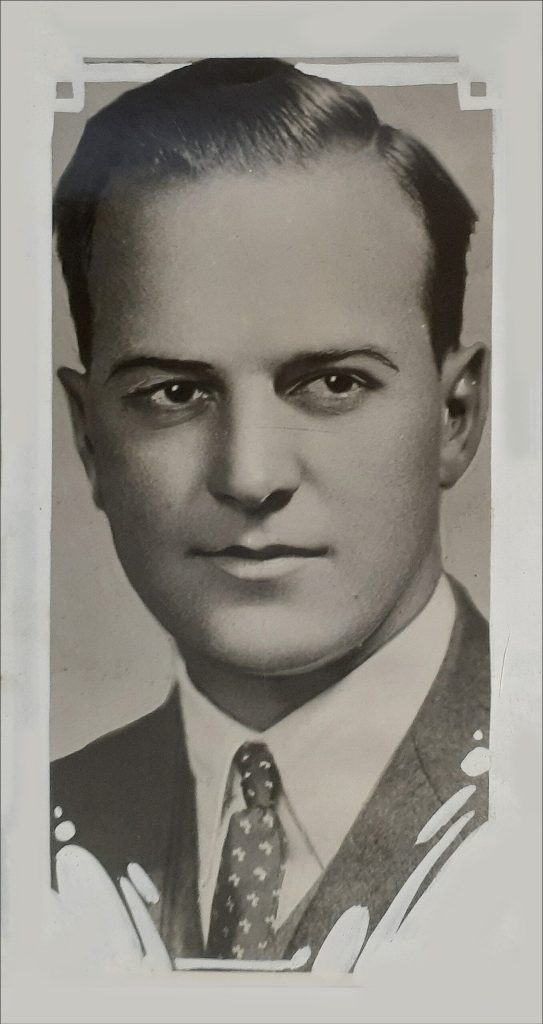
Sadly, unlike the Crocker Museum in Sacramento (one of the oldest museums in the West), Harry’s Motion Picture Museum was doomed for failure. It was closed just four months after it opened. Maybe the twenty-odd year old industry was too new. Maybe the constellation of superstars formed in Hollywood and the magic that they created on the screen didn’t have the appeal that Harry imagined. Maybe the public had already turned the page on the silent screen era. The gods of Hollywood shouted “Let There Be Sound!” and there was no looking back.
Harry got some bad reviews for his creation that certainly didn’t help his endeavors. Picture Play Magazine wrote, “…Stills, rather than Gauguins, line the walls. Sets, instead of medieval furniture, cover the floors. It is Sadie Thompson’s dress, not Marie Antionette’s, in that show case; a mechanical dinosaur from “The Lost World,” not a Malayan skeleton, in the corner; that armor dates from “Robin Hood’s” time, released, you remember, about five years ago…”
Dunham Thorp from Motion Picture Magazine didn’t believe that Harry had “an altruistic yen to satisfy the frustrated yearnings of out-of-towners barred admission to the lots.” He thought the museum was strictly a for-profit venture. The already rich Crocker wanted to gild his lilies and fill the family coffers. Thorp believed that the treasures of the important entertainment industry that recognized Los Angeles as its capital belonged in a cross town Cinematograph Museum that was being discussed at the University of Southern California. They were to work in close cooperation with the Smithsonian Institution in Washington. It would be more of a repository where all sorts of relics of the history of the screen would be preserved for future generations to act as a source for studios and students. This museum was also short lived.
Things began to sour with the Crocker-Chaplin pairing. As a result of creative differences during the filming of City Lights, Crocker was let go by Chaplin. A campy scene that they shot together (shown at the top of this story) was cut from the film. They would later reconcile, become great friends and work together again. Though Harry would take cameo roles in films for the rest of his life when invited (including playing his Uncle Charles Crocker in Gentleman Jim starring Errol Flynn), after 1928 he would turn his attentions more and more to the business side of entertainment and to journalism. Crocker became a correspondent for the International News Service in London and was for a number of years assistant to the publisher of The Los Angeles Examiner. He wrote a daily column for over twenty years, Behind the Makeup. Crocker headed the financial team that built Romanov’s, the Beverly Hills restaurant that catered to A-list actors and actresses through the Golden Age of Hollywood. Harry would become a star-maker and strings-puller in Los Angeles just as cousin Aimée Crocker was during her reign on Broadway as “Queen of the First-Nighters.”
Harry Crocker would later befriend and become a personal assistant to another creative and energetic visionary and autocrat — William Randolph Hearst…
Kevin Taylor is the official biographer for Aimee Crocker and a leading researcher on the Crocker Family. His many articles can be read at aimeecrocker.com

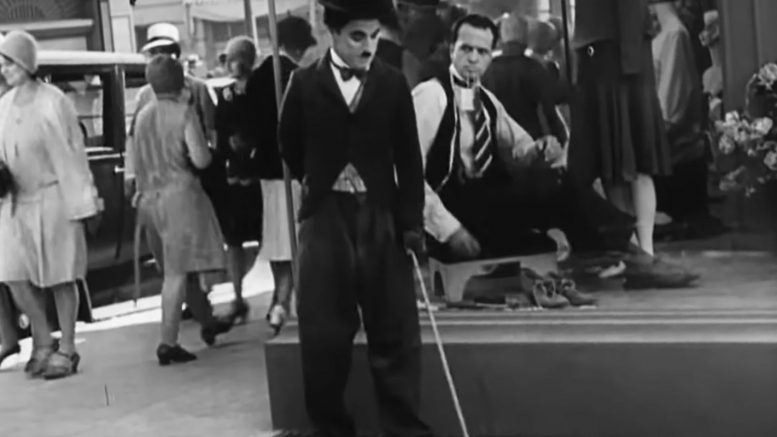
Be the first to comment on "Charlie Chaplin and the Crocker Museum"